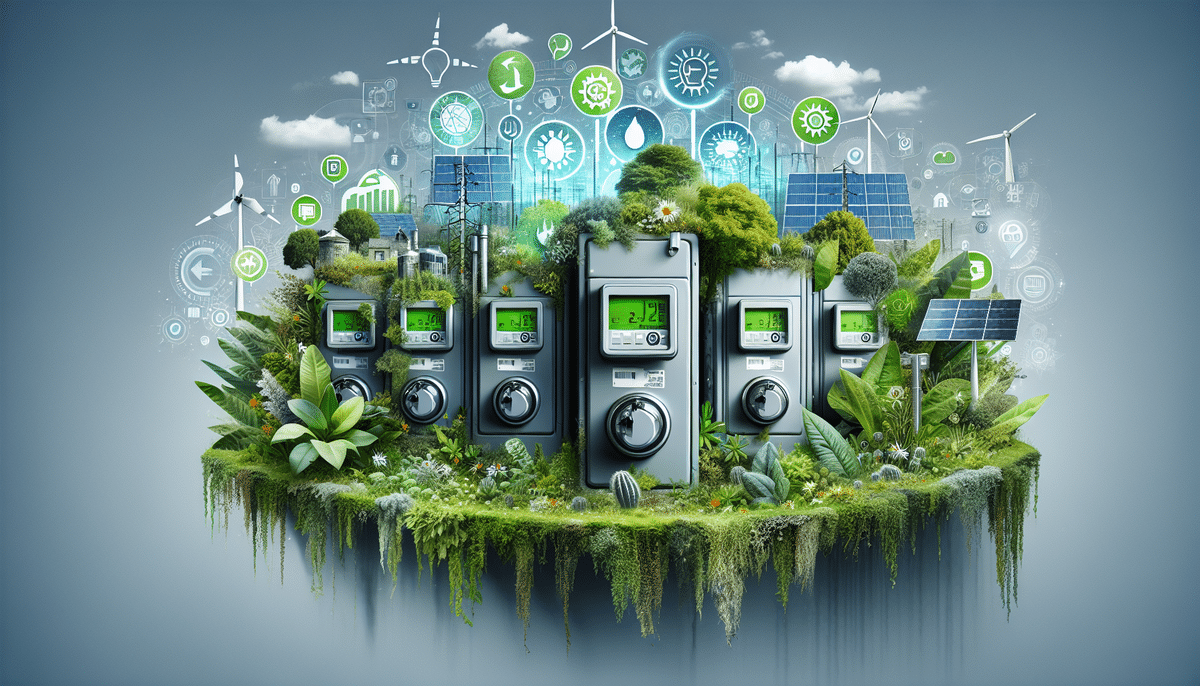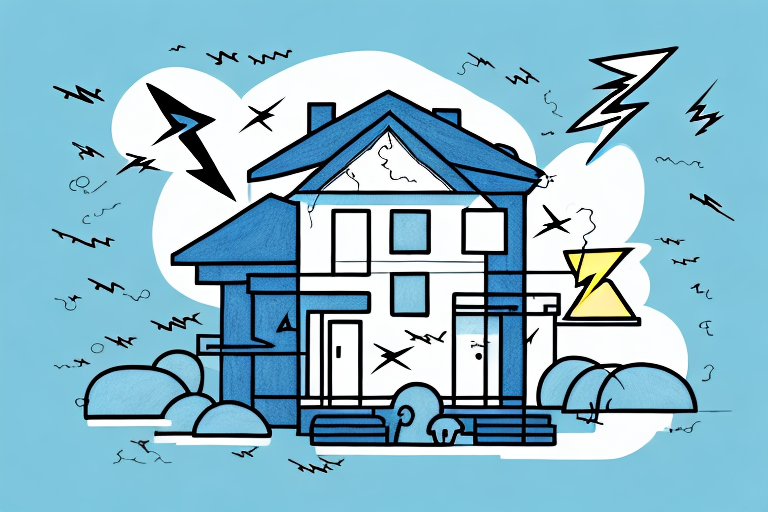Examining the Impacts of the 2023 General Rate Increase
In 2023, the United States has witnessed a general rate increase affecting all utility bills across the country. This rise impacts everything from electricity to water, driven by multiple factors including inflation, rising energy costs, and the need for infrastructure maintenance. According to the U.S. Energy Information Administration (EIA), utility rates have increased by an average of 5% compared to the previous year. In this article, we explore the components behind the increase, its implications for consumers, and strategies to prepare. We also delve into the history of general rate increases, the government's role in setting rates, and the effects on small businesses and entrepreneurs. Experts provide predictions on the long-term consequences, and we analyze the local versus national impact of the increase. Finally, we examine the future influence of climate change on utility rates and its connection to the 2023 rate increase.
Understanding the 2023 General Rate Increase: What it Means for You
For the average consumer, the general rate increase translates to higher utility bills each month. This can be particularly challenging for those on a fixed income or with limited financial means. However, it's crucial to recognize that the rate increase is necessary to cover utility costs and maintain infrastructure integrity. The magnitude of the increase varies by location and utility provider, making budgeting and energy usage optimization essential.
Strategies to Reduce Energy Usage:
- Invest in energy-efficient appliances and LED light bulbs.
- Adjust thermostat settings to conserve heating and cooling energy.
- Implement smart home technologies to monitor and reduce energy consumption.
Although the initial investment in energy-efficient solutions may be higher, the long-term savings on energy bills can be substantial. Additionally, some utilities offer programs for low-income households or those with specific medical needs requiring additional energy usage. These programs may provide discounts or assistance with bill payments. Be sure to check with your utility provider at www.shipscience.com/utilities to determine your eligibility.
How Will the 2023 General Rate Increase Affect Your Monthly Bills?
The extent of the rate increase depends on various factors, including the cost of generating and delivering energy, labor costs, and infrastructure maintenance expenses. Consumers can expect to see these increases reflected in their monthly bills for electricity, gas, water, and other utilities.
Key Factors Influencing Rate Increases:
- Energy Generation and Delivery Costs: Fluctuations in fuel prices and maintenance of energy facilities.
- Labor Costs: Wages and benefits for utility workers.
- Infrastructure Maintenance: Upkeep and upgrades of utility infrastructure to ensure reliable service.
To manage the added costs, consumers should consider investing in energy-efficient appliances and reducing usage when possible. Additionally, some utility companies offer programs to help customers manage their bills during rate increases, such as payment plans, budget billing, or energy assistance programs for low-income households. Regularly reviewing utility bills to ensure accurate charges and identifying opportunities to reduce usage can also help mitigate the financial impact.
The History of General Rate Increases: What We Can Learn From Past Trends
General rate increases have been a recurring phenomenon influenced by various economic and regulatory factors. Examining past trends can shed light on how rates are determined and what drives changes over time.
Key Historical Factors:
- Inflation: Rising costs of labor, materials, and equipment.
- Aging Infrastructure: Increased maintenance and replacement costs for outdated utility systems.
- Energy Source Changes: Shifts from traditional fossil fuels to renewable energy sources.
- Regulatory Requirements: Compliance with new environmental and safety standards.
Market competition also plays a role; fewer providers can lead to higher rates, while increased competition may drive rates down. Technological advancements, such as automation, can reduce operational costs and potentially lower rates for consumers. Historical data from the Bureau of Labor Statistics (BLS) indicates that utility rates have fluctuated based on these factors, providing valuable insights for predicting future trends.
Experts Weigh In: Predictions for the Long-Term Effects of the 2023 General Rate Increase
Experts predict that general rate increases will continue for the foreseeable future as infrastructure and labor costs persist in rising. However, they also note that advances in technology and renewable energy sources could help offset some of these costs in the long run. Consumers may also see increases in green fees or other surcharges related to environmental initiatives.
Potential Long-Term Effects:
- Shift Towards Energy Efficiency: Increased consumer investment in energy-efficient appliances and sustainable technologies.
- Reduction in Carbon Emissions: Lower overall energy consumption could lead to a decrease in carbon emissions.
- Green Energy Initiatives: Expansion of renewable energy projects supported by government incentives.
The long-term effects of the general rate increase will depend on many factors, including policy decisions, technological advancements, and consumer behavior. Staying informed and engaged with these developments is crucial for adapting to and mitigating potential challenges.
Exploring the Economic Factors Behind the 2023 General Rate Increase
Economic factors play a significant role in setting utility rates. In addition to inflation, other determinants include changes in supply and demand for energy, the cost of capital, and external events such as natural disasters that impact energy resources.
Major Economic Factors:
- Inflation: Increases in the general price level affect the cost of goods and services, including utilities.
- Supply and Demand: Fluctuations in energy demand and supply can drive price changes.
- Cost of Capital: Interest rates and investment costs influence utility pricing.
- Natural Disasters: Events like hurricanes or wildfires can disrupt energy supply chains and infrastructure.
One of the primary economic factors leading to the 2023 general rate increase is the rising cost of renewable energy sources. While renewable energy is gaining popularity, the production costs remain higher compared to traditional fossil fuels. As demand for renewable energy increases, so do the production costs, ultimately leading to higher rates for consumers. For more detailed economic analyses, refer to the Federal Reserve reports.
How to Prepare for the 2023 General Rate Increase: Tips and Strategies
There are several proactive steps consumers can take to prepare for the general rate increase:
- Monitor Energy Usage: Track your energy consumption using smart meters or utility tools to identify areas for reduction.
- Upgrade to Energy-Efficient Appliances: Replace old appliances with energy-efficient models to reduce usage and costs.
- Adjust Thermostat Settings: Setting your thermostat a few degrees higher in summer and lower in winter can lead to significant savings.
- Enroll in Utility Programs: Take advantage of payment plans, budget billing, or energy assistance programs offered by your utility provider.
- Explore Alternative Energy Sources: Consider installing solar panels or wind turbines to generate your own energy and reduce reliance on the grid.
Additionally, reviewing and adjusting your household budget to account for increased utility costs can help manage finances effectively. Cutting back on non-essential expenses and finding ways to earn extra income are also viable strategies to offset the impact of rate increases.
The Impact of the 2023 General Rate Increase on Small Businesses and Entrepreneurs
Small businesses and entrepreneurs may experience a more pronounced impact from the general rate increase due to their typically tighter operating budgets. Higher utility costs can affect profitability and operational expenses, making it essential for small businesses to implement cost-saving measures.
Strategies for Small Businesses:
- Invest in energy-efficient equipment to lower energy consumption.
- Implement water-saving practices to reduce water bills.
- Explore renewable energy sources, such as solar panels, to generate onsite power.
- Take advantage of utility programs or incentives specifically designed for small businesses.
Moreover, the general rate increase may lead to decreased consumer spending as households adjust to higher bills. This reduction in discretionary spending can negatively impact small businesses, emphasizing the need for adaptive marketing strategies and value-driven offerings. To remain competitive, small businesses may need to differentiate themselves through unique products or exceptional customer service.
For more resources, visit www.shipscience.com/smallbusiness.
The Role of Government in Setting Rates: An Analysis of Policy Decisions
The government plays a pivotal role in setting utility rates, with policy decisions significantly influencing rate structures and consumer impacts. Regulatory bodies, such as state public utility commissions, oversee rate approvals and ensure that rates are fair and justified based on cost analyses.
Government Involvement Includes:
- Regulatory Oversight: Ensuring utility companies adhere to state and federal regulations.
- Rate Setting: Approving rate changes based on utility cost recovery and required returns.
- Incentivizing Renewable Energy: Implementing policies that promote the adoption of renewable energy sources.
- Consumer Protection: Safeguarding consumer interests by preventing unfair rate hikes.
Policy decisions can either mitigate or exacerbate rate increases. For instance, incentives for renewable energy adoption can lead to long-term savings, while stringent regulatory requirements may increase compliance costs for utilities. Understanding the interplay between government policies and utility rates is essential for anticipating future rate changes and advocating for balanced regulatory frameworks.
For detailed information on utility regulations, refer to the Federal Register.
Debating the Pros and Cons of the 2023 General Rate Increase: Perspectives from Both Sides
The general rate increase has sparked debate among various stakeholders, each presenting different viewpoints on its necessity and impact.
Supporting Perspectives:
- Infrastructure Maintenance: Proponents argue that rate increases are essential for maintaining and upgrading aging utility infrastructure, ensuring reliable service.
- Cost Recovery: Utilities need to recover increased operational costs, including labor, materials, and compliance with new regulations.
- Investment in Renewable Energy: Rates funding the transition to renewable energy sources, supporting environmental sustainability.
Opposing Perspectives:
- Financial Burden on Consumers: Critics claim that rate increases disproportionately affect low-income households and add financial strain to consumers.
- Lack of Transparency: Concerns about the transparency of how rate increases are determined and whether utility companies are justified in their pricing.
- Impact on Small Businesses: Higher operating costs can hinder the growth and sustainability of small businesses and entrepreneurs.
Balancing the need for rate increases with the economic well-being of consumers is a complex challenge. It is essential to consider both the necessity of maintaining utility services and the financial impact on households and businesses to formulate equitable solutions.
Local Vs National Impact of The 2023 General Rate Increase: A Closer Look
The impact of the general rate increase varies significantly between local and national contexts. While some regions may experience more substantial rate hikes due to specific local factors, others might see minimal changes based on their unique circumstances.
Local Impact Factors:
- Regional Energy Sources: Areas relying heavily on certain energy sources may face different cost structures.
- State Regulations: Variations in state-level regulations can lead to differences in rate increases.
- Local Infrastructure Needs: The condition and requirements of local utility infrastructure influence rate adjustments.
National Impact Factors:
- Federal Policies: Nationwide policies on energy, environment, and economy affect utility rates across states.
- Market Trends: National trends in energy demand and supply influence overall rate structures.
- Economic Conditions: National economic indicators, such as inflation rates and GDP growth, play a role in rate determinations.
Understanding the distinction between local and national impacts helps consumers and businesses navigate the rate changes more effectively. Engaging with local utility providers and regulatory bodies can provide tailored information and support based on specific regional dynamics.
For regional rate information, visit www.shipscience.com/regionalrates.
The Future Impact of Climate Change on Utility Rates and How They Relate to The 2023 Rate Increase
Climate change poses significant challenges to the utility sector, influencing future rate structures and operational costs. As extreme weather events become more frequent and severe, utilities must invest in resilient infrastructure to ensure reliable service.
Climate Change Factors Affecting Utility Rates:
- Extreme Weather Events: Hurricanes, floods, and wildfires can damage infrastructure, leading to costly repairs and rate adjustments.
- Transition to Renewable Energy: Efforts to reduce greenhouse gas emissions necessitate investments in renewable energy sources, affecting production costs.
- Regulatory Compliance: Adhering to new environmental regulations requires additional resources and investments.
- Long-Term Sustainability: Ensuring long-term sustainability of energy resources involves strategic planning and financial commitments.
The 2023 general rate increase is partially driven by the need to address these climate-related challenges. Utilities are reallocating funds to enhance infrastructure resilience, invest in renewable energy projects, and comply with evolving environmental standards. These efforts are crucial for mitigating the adverse effects of climate change and ensuring the sustainability of utility services.
Future rate increases are likely as utilities continue to adapt to and mitigate the impacts of climate change. Investing in sustainable practices and technologies will be essential for managing costs and maintaining service reliability in an increasingly variable climate.
For more information on climate initiatives and utility rates, visit the Intergovernmental Panel on Climate Change (IPCC) and the Environmental Protection Agency (EPA).




















